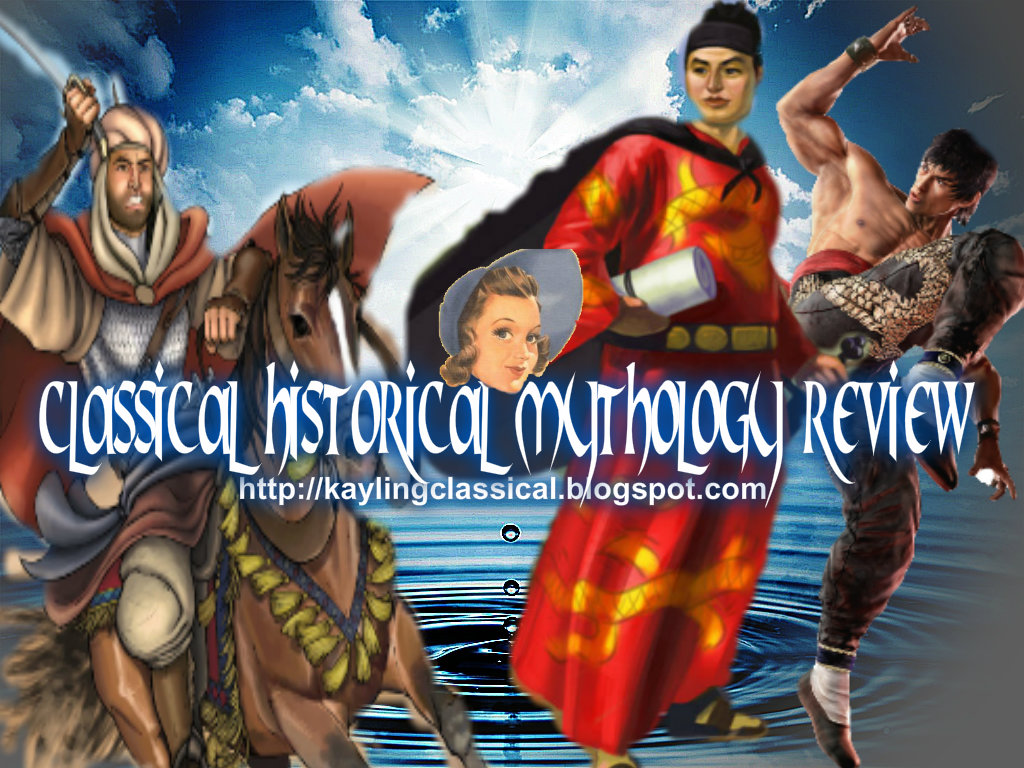The Miao Rebellion of 1795-1806 was an anti-Han Chinese uprising in Hunan and Guizhou provinces, during the reign of emperor Jiaqing. It was catalyzed by tensions between local populations and Han Chinese immigrants. Bloodily suppressed, it served as the antecedent to the much larger uprising of Miao Rebellion (1854–73). The term "Miao" does not mean only the antecedents of today's Miao national minority; it is much more general term, which had been used by the Chinese to describe various aboriginal, mountain tribes of Guizhou and other south-western provinces of China, which shared some cultural traits. They consisted of 40-60% population of the province. The Chinese Empire used control rather than forced assimilation towards their non-Chinese inhabitants. In the south-west, since 15th century, in provinces of Yunnan, Guizhou, Guangxi and Sichuan, the most common way of rule was through semi-independent local chieftains, called tusi, on whom the emperor bestowed titles, demanding only taxes and peace in their territories. However, Chinese immigration was forcing the original inhabitants out of the best lands; Guizhou's territory, although sparsely populated, consists mainly of high mountains, which offer little arable land.
The Chinese state "followed" the immigrants, establishing its structures, first military, then civil, and displacing semi-independent tusi with regular administration over time. This practice, called gaitu guilu, led to conflicts. The uprising was one of the long series dating back to Ming Dynasty's conquest of the area. Whenever tensions reached a critical point, the people rose in revolt. Each rebellion, bloodily put down, left simmering hatred, and problems which were rather suppressed than solved. Basic questions of misrule, official abuse, extortion, over-taxation and land-grab remained. Mass Chinese immigration put a strain on scarce resources, but officials preyed on rather than administer the population. The quality of the officialdom in Guizhou and neighbouring areas remained very low. Great uprisings took place in Ming times, and during Qing dynasty in 1735–36, 1796–1806, and last and the largest in 1854-1873. Previous rebellion of 1736 had been met with harsh measures, in the effect the second half of 18th century was relatively calm, i.e. the numerous local incidents were not strong enough to challenge governmental authority. However, the officials were unnerved by heterodox sects spreading their teachings among both Han and Miao. In 1795 the tensions reached the point of explosion and the Miaos, led by Shi Liudeng and Shi Sanbao, rose again.
Hunan was the main area of fighting, with some taking place in Guizhou. The Qing dynasty sent banner troops, Green Standard battalions and mobilized local militias and self-defence units. The lands of rebellious Miao were confiscated, to punish them and to increase the power of state; this action, however, provoked further conflicts, because new Chinese landowners ruthlessly exploited their Miao tenants. On the pacified territories forts and military colonies were set up, and Miao and Chinese territories were separated by the wall with watchtowers. Still, it took eleven years to finally quell the rebellion. Relocating Green Standard troops from Hubei to Hunan in 1795, to deal with the Miao, facilitated White Lotus Rebellion, because of the diminished control in the northern province. Military action was followed by the policy of forced assimilation: traditional dress and religious rites were forbidden and ethnic segregation policy enforced. There were also attempts at introducing Confucian education. Nevertheless, the deep causes of unrest remained unchanged and the tensions grew again, until they exploded in the largest of Miao uprisings of 1854. However, it should be noted that relatively few of Hunan Miao, "pacified" in 1795-1806, participated in the rebellions of 1850s.
The Miao Rebellion of 1854 - 1873 was an uprising of ethnic Miao, Han, and Muslim Chinese in Guizhou province during the reign of the Qing dynasty. The uprising was preceded by Miao rebellions in 1735-36 and 1795-1806, and was one of many ethnic uprisings sweeping China in the 19th century. The rebellion spanned the Xianfeng and Tongzhi periods of the Qing dynasty, and was eventually suppressed with military force. Estimates place the number of casualties as high as 4.9 million out of a total population of 7 millions, though these figures are likely overstated. The rebellion stemmed from a variety of grievances, including long-standing ethnic tensions with Han Chinese, poor administration, grinding poverty and growing competition for arable land. The eruption of the Taiping Rebellion led the Qing government to increase taxation, and to simultaneously withdraw troops from the already restive region, thus allowing a rebellion to unfold. Historian Robert Jenks notes, however, that the Miao Rebellion did not comprise only Miao people; rather, it included a variety of fragmented ethnic groups, including Han Chinese. One estimate suggests that only 40 percent of the rebels were Miao, while Han Chinese represented 49 percent of participants.
The term "Miao" does not mean only the antecedents of today's Miao national minority; it is much more general term, which had been used by the Chinese to describe various aboriginal, mountain tribes of Guizhou and other southwestern provinces of China, which shared some cultural traits. They consisted of 40-60% population of the province. The Miao Rebellions (Ming Dynasty) were a series of rebellions of the Miao and other aboriginal tribes of southern China. The Ming Dynasty crushed the rebels with overwhelming force. Later in the Qing dynasty, another series of Miao rebellions broke out.
In one of the first Miao revolts, in the 1370s, several thousand Uyghur warriors from Turpan were sent by the Ming Hongwu Emperor to crush Miao rebels in Taoyuan County of Changde, Hunan (at the time Hunan was part of Huguang province). The Uyghurs were all given titles and allowed to live in Changde, Hunan. The title of the Uyghur commander was "Grand General of South-Pacifying Post of the Nation". The Uyghurs were led by Gen. Hala Bashi, who was awarded titles by the Ming Hongwu Emperor and the surname Jian. They live in Taoyuan County of Hunan province to this day. Chinese Muslim troops were also used by the Ming Dynasty to crush the Miao and other aboriginal rebels in the area, and were also settled in Changde, Hunan, where their descendants still live.
On May 4, 1449, the Miao revolted. The Ming military sent Gen. Wang Ji to destroy the rebels. The Miao rebellions spread through Huguang and Guizhou. Guizhou was ransacked in 1459 by and 1460 by government forces, who looted the town and sold many of the residents into slavery. The eunuch Yuan Rangyang was appointed Grand Defender of Huguang and Guizhou. Multiple Miao rebellions broke out in the 1460s. The Miao and Yao rebelled in 1464, and the revolt spread throughout Guangxi, Hunan, Guizhou, Jiangxi and Guangdong. The Miao had settled throughout southern China. On the Hunan Guizhou border, more rebellions broke out in 1466. The Ming rallied 1,000 Mongol cavalry archers and 30,000 soldiers in total to crush the Miao. Ming commander Gen. Li Chen, who was an hereditary general, fought against the aboriginal tribes for decades in the 1400s and used brutal tactics against them. He waged campaigns of extermination against when whenever they rebelled--in 1467 and 1475, among others--and killed thousands of them.
Certain subgroups of Miao are known as Hmong. In the 1500s the Ming dynasty sent ethnic Chinese to settle in the tribal areas of the Hmong and other aboriginal tribes in the southwest. The Ming sent 2000 garrison troops to defeat the Hmong rebels; 40,000 rebels were slaughtered. By 1500 the Hmong were raiding areas around Hunan province and had fought almost every year in an effort to gain their independence. The Ming Dynasty constructed the Hmong wall, which was 10 feet high and 100 miles long with military posts. The Hmong in Guizhou used armor made of buffalo skin or mail made of copper and iron, and weapons such as shields, spears, knives, crossbows and poisoned arrows. Two Chinese generals who defected and joined the Hmong gave them gunpowder weapons, such as flintlock rifles, cannons and blunderbusses, and showed the rebels how to make them.
An account of the origins of the Hmong in Sichuan says that the Ming Chinese in Guangdong defeated the ancestors of the Hmong, and forcibly relocated them to Sichuan. The Chinese naming and classification of the southern tribes was often vague. When the Ming began colonizing the south, the classification of the natives began to grow more accurate. The Ming Dynasty army almost completely exterminated the Bo minority people in southern China. The Ming commander crushed a Miao rebellion in 1460, and castrated 1,565 Miao boys, which resulted in the deaths of 329 of them. They were then turned into eunuch slaves. This event occurred during the rule of the Zhengtong Emperor (Yingcong or Ying Tsung). Since 329 of the boys died, even more were needed to be castrated. A large number of the Han Chinese soldiers who crushed the rebellion were then settled in the southwest, given land and married Miao women.
Date :
- 1300s, 1400s
- Sichuan,
- Guizhou,
- Yunnan,
- Huguang
- Ming victory
- Ming dynasty Miao, Yao and other aboriginal rebels
- Hongwu Emperor
- Grand General of South-Pacifying Post of the Nation- Hala Bashi
- Zhengtong Emperor
- Li Chen
- Thousands of Han chinese. Chinese Muslim, and Uyghur troops
- 1,000 Mongol cavalry archers Thousands of Miao, Yao and other aboriginal rebels
- Tens of thousands of rebels killed, thousands of castrations




